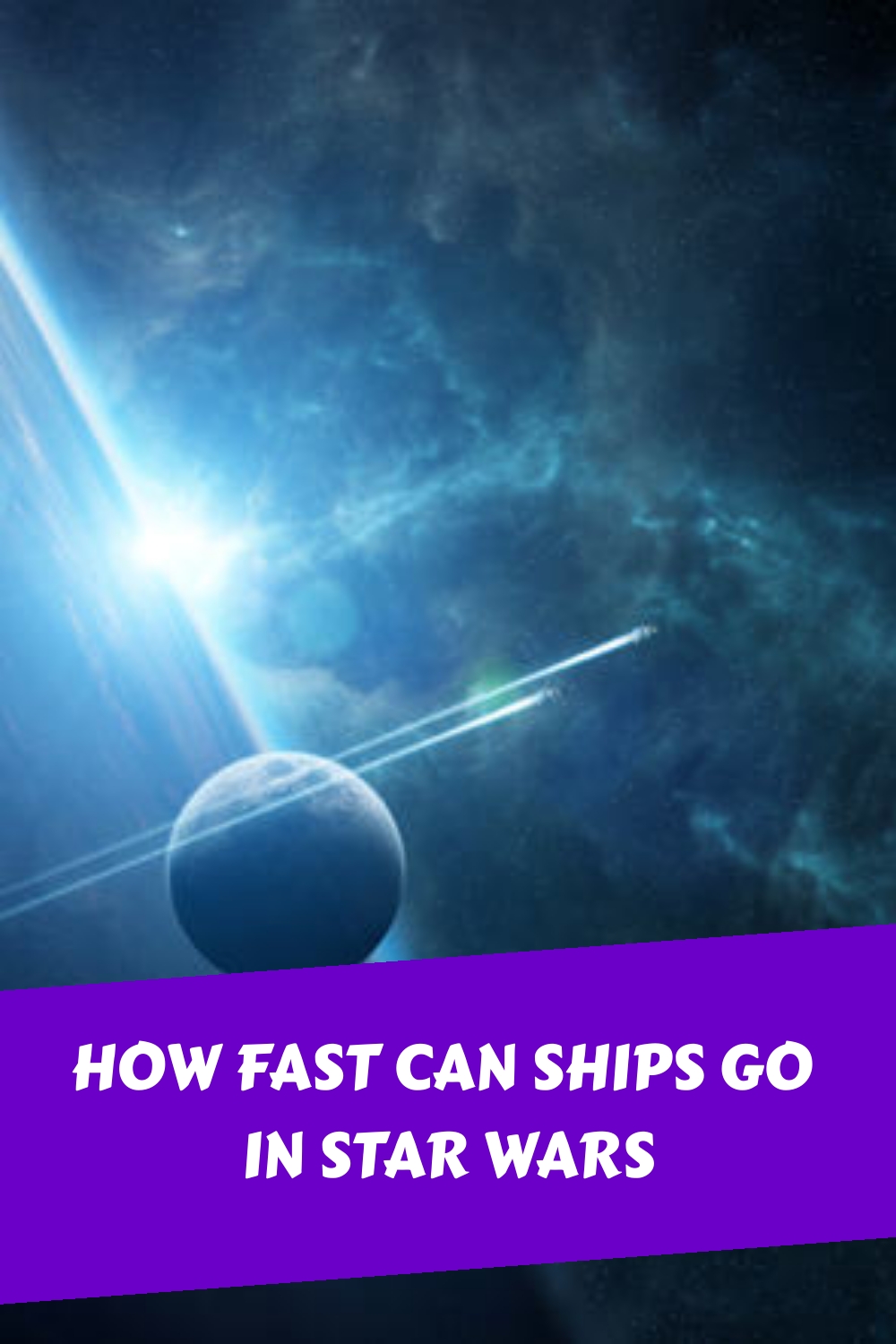The first time you saw the Millenium Falcon jump into hyperspace, chances are good that your starry-eyed amazement was thinking only of how incredible the movie was, not about the actual logistics of space travel. While there are many fan theories floating around, there is actual fact-based data that pinpoints the potential speed necessary to successfully navigate space flight – at least in the Star Wars world.
The question is: how fast can ships go in Star Wars?
Distance in Star Wars’ space realm is measured in light years. A Galactic Standard light year is approximately 9.5 quadrillion meters, and the Star Wars galaxy is approximately 120,000 light years in diameter. Given an average of how long it takes ships to travel between planets in the movies, it is likely that a ship in hyperspace could go as fast as 6 quintillion meters per hour.
This is an incredibly broad estimation, but given how many physicists have devoted their time and knowledge to figure out how fast ships can go in Star Wars, it is safe to assume that their findings are as close as we will come to knowing the top speed of ships like the Millenium Falcon, the Redemption, the Slave I, and the Tantive IV.
How Fast Can Ships Go In Star Wars?
How fast a ship could go in hyperspace depended largely on the class of engine they had onboard. The faster the hyperdrive engine, the lower the rating number; in most cases, military starships were rated as Class 1 or Class 2 vehicles, while civilian ships were much slower, coming in at a Class 5 rating.
It is important to note, that according to the original movie plot-line of Star Wars, Han Solo claimed that the Millenium Falcon – widely known throughout the galaxy as being the fastest ship around – can go 0.5 past light-speed, or hyper-speed. This means it technically would have had a 0.5 Class rating; something that would have given it a significant speed edge over any other craft in the galaxy.
We may never know the exact top speed of the fabled ship, but it is clear that in terms of raw acceleration capabilities, it was the best ship around. Speeds of standard ships that do not enter hyperspace are generally unknown, due in large part to the many varied routes ships could take to reach a specific destination. As with real life travel, the route selected is a dominant factor in the overall speed of a trip.
How Long Does it Take to Travel in Star Wars?
Depending on whether or not a ship chose to enter hyperspace, space travel in Star Wars varied depending on the size and speed of the individual craft. In some instances, it took days to travel between planets, while in other cases, it took mere moments.
While some of the time travel inconsistencies can be attributed to plot holes in the movies themselves, it nevertheless begs the question: can all ships in the Star Wars universe enter into hyperspace? And if so, why would they not all choose to travel that way all the time to save potentially days every time a trip was taken?
According to the plot of the movies, a ship had to be outfitted with a special hyperdrive engine that allowed them to shift into a special acceleration mode. Because of the dangers related to hyperspace travel, specific hyperspace safe-travel routes were set up, indicating where such travel was allowed and where it was prohibited.
The time it took ships to travel through the galaxy depended, then, simply on whether or not a ship had a hyperdrive engine, and whether or not their travel route aligned with hyperspace-allowed travel zones. If they checked those two boxes, then they could jump to their desired location quickly and efficiently; if not, then traditional, slower space travel was the only course of action.
Another thing to take into consideration is the fact that making a hyperspace jump was incredibly hard on the body and mind. Similar to real-life pilots that break the sound barrier, the external forces required to accomplish such a feat compress the body and internal organs, and make simple things like breathing and moving arms and hands extremely difficult and – often – uncomfortable.
It is likely that ships carrying average passengers – versus trained fighter pilots like Han Solo or the Storm troopers – would opt for traditional, slow space travel simply to cater to the comfort needs of those on board. It would not have been worth the average spacecraft chancing discomfort or injury to make a hyperspace jump, especially since most pilots that hazarded that option were trained to withstand the rigors of such travels.
How Do Ships Enter Into Hyperspace?
Making the jump into hyperspace – something ships in the movies do regularly – required molecular displacement achieved by literally breaking past the speed of light. By entering into this alternate, parallel dimension, ships and their crews could “jump” to different points in space in seconds or minutes, versus taking days to travel slowly and traditionally.
Traveling past the speed of light has its drawbacks, though; precise calculations were required to ensure that ships did not end up somewhere they did not want to be. Han Solo said,
“Traveling through hyperspace ain’t like dusting crops, boy! Without precise calculations we could fly right through a star or bounce too close to a supernova, and that’d end your trip real quick, wouldn’t it?”
Ships entering hyperspace needed to have an engine capable of making the jump, and a pilot capable of calculating a safe and dependable route. If this was real life, there would be many logistics that would need to be worked out in order to actually engage the hyperdrive mode, but since this is a cinematic universe, ambiguity and mystery only add to the allure and cult-like appreciation for the magical, exciting aspects of hyperspace travel.
Can Ships Be Slowed Down Once in Hyperspeed?
Once a ship engaged their hyperdrive engine and made the jump into hyperspace in the movies, they were generally locked into their course of action until they emerged on the other side of the space/time bubble they passed through. While this pre-determined and heavily calculated jump process seems foolproof, there are instances where a ship can be slowed down or pulled out of their hyperdrive state.
An interdiction field, according to Star Wars lore, is an artificial gravity well that “disabled hyperspace capabilities in most ships.” These simulated gravity fields could be used to both prevent a ship from entering hyperspace from the get-go, or – in some cases – to pull a ship out of the parallel space-travel dimension and back into realspace.
Since most hyperdrive engines had a built-in failsafe that protected ships from unseen gravity wells, people could use these interdiction fields could be strategically used to engage those failsafe mechanisms and cause a ship to drop instantly out of their hyperspace flight path. This was a risky move, though, and not something often utilized in the movies.
More of a tactical weapon than a widely used civilian tool, pulling a ship out of hyperspace was definitely the exception, and not the rule. For the most part, when a ship locked in their travel coordinates and engaged the engine, they arrived safely and dependably at their desired location without a hitch.
In terms of traditional space travel, while many of the agile fighter ships and civilian spacecrafts were highly responsive and could likely stop on a dime, the larger cargo ships or unique vessels – such as the Death Star – presumably needed a much longer response time to slow down or come to a halt.
At the end of the day, Star Wars exists in a unique, fictional universe, so any inaccuracies or scientific inconsistencies have to be excised in the name of good entertainment. While there is just enough fact-based information sprinkled in to make it interesting, hyperspace travel is, after all, a theoretical thing – not something that is meant to be one hundred percent provable by real-world standards.






Leave a comment
You must be logged in to post a comment.